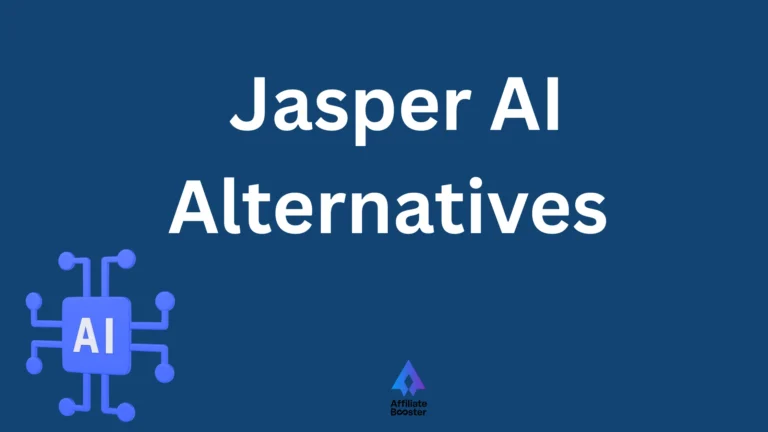ProWritingAid

- Grammar and style checks
- In-depth writing reports
- Plagiarism checker available
- Integrates with multiple platforms
Wordtune

- Sentence rephrasing suggestions
- Real-time feedback
- Tone adjustment options
- Simple, user-friendly interface
LanguageTool

- Multi-language grammar checks
- Style and tone suggestions
- Browser and app integration
- Free basic version available
As someone who writes content daily, from emails to blog posts, I’ve often stopped to fix awkward sentences or second-guess my grammar. Grammarly has helped with that, catching small errors and improving flow.
But it’s not the best fit for everyone. Its price can be high, and its features don’t always match every need.
Whether you’re a student on a tight budget, a writer needing deeper feedback, or a business focused on consistent messaging, there are other solid options.
After testing many tools, I’ve put together this list of the 15 best Grammarly alternatives for 2025 tools that help you write better without spending too much.
Why Look Beyond Grammarly?
Grammarly is a well-known tool. Its grammar checks, spelling help, and tone suggestions have made it popular with many writers.
Still, it doesn’t work for everyone. The free version has limits, and the full version costs more than some people or small teams want to spend.
Some writers need stronger style tools, support for other languages, or apps that connect with platforms like Scrivener or Notion.
Others prefer a one-time purchase instead of a monthly fee. I’ve been there looking for something that fits my writing style and workflow without losing quality.
The tools in this list bring different strengths. Some cost less, some focus on certain types of writing, and some offer features that Grammarly doesn’t. One of them might be the right fit for you.
15 Best Grammarly Alternatives In 2025
1. ProWritingAid: The Writer’s Coach
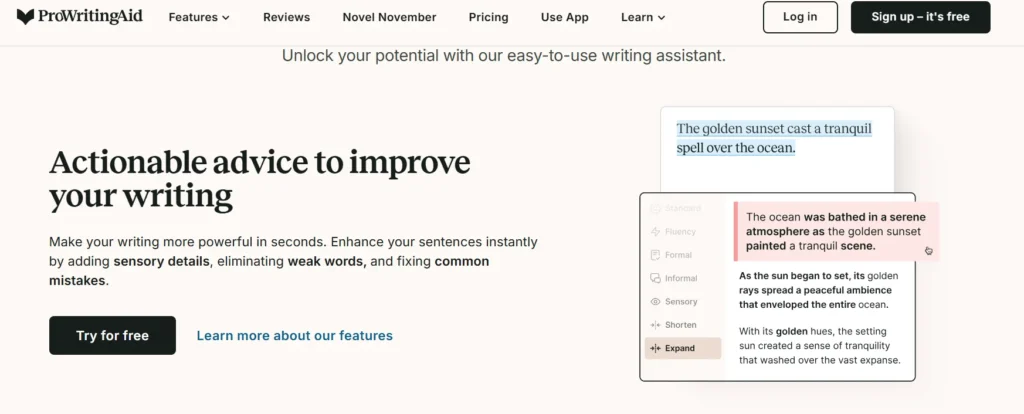
ProWritingAid is more than a grammar and spell checker; it’s a full writing improvement platform. Instead of just correcting mistakes, it acts as a mentor that teaches you how to grow as a writer.
It highlights weak sentence structures, points out overused words, and even gives suggestions on rhythm and pacing so your writing feels smooth and engaging.
Many fiction authors rely on it for dialogue tag checks, while bloggers appreciate its SEO-friendly tools for online content. Business professionals use it to keep reports and emails clear and polished.
What makes ProWritingAid a stronger Grammarly alternative is the level of detail it provides. Grammarly corrects grammar and tone quickly, but ProWritingAid digs deeper with over 20 different writing reports that help you understand your strengths and weaknesses.
It’s not just an editor; it’s a coach that improves your skills over time. Plus, with its affordable annual plan, it costs far less than Grammarly’s month-to-month pricing.
Key Features:
- Grammar, spelling, and style checks
- Over 20 detailed writing reports (style, readability, consistency, clichés, pacing, sentence variety)
- Vocabulary enhancement suggestions
- In-depth readability analysis with scoring
- Dialogue tag and sticky sentence detection for fiction writers
- Plagiarism checker (in premium plus plan)
- Integrations with Word, Google Docs, Chrome, and Scrivener
- Free version for basic checks; premium starts at $60/year
Pros
- Provides detailed, actionable feedback instead of quick fixes
- Affordable yearly subscription compared to Grammarly’s monthly fees
- Works well for long-form content such as novels, blogs, and reports
- Wide range of integrations for different writing platforms
- Helps build writing skills through reports and guidance
- Strong plagiarism detection is available in higher plans
Cons
- The interface can feel cluttered due to so many reports
- Steeper learning curve for beginners
- Lacks a mobile application
- Desktop app isn’t as sleek as Grammarly’s browser extensions
2. Wordtune: The Rewriting Buddy
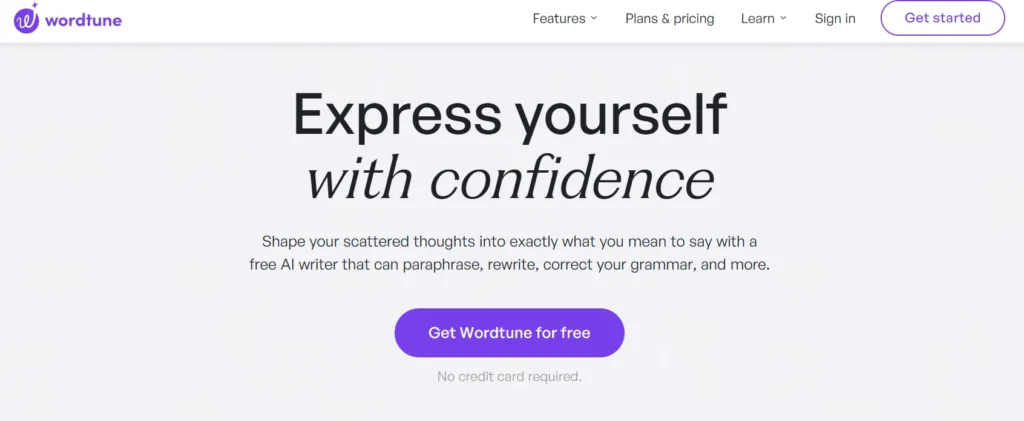
Wordtune is built for writers who want their sentences to sound smoother, clearer, and more engaging. Instead of just correcting mistakes, it focuses on rewriting sentences in multiple ways so you can choose the version that best matches your intent.
This makes it especially useful for professionals drafting emails, marketers refining blog posts, or students making essays more readable.
Non-native English speakers also find it helpful for learning different ways to phrase ideas more naturally. While Grammarly does offer tone suggestions, Wordtune goes further by giving you alternative phrasings on the spot, helping you express the same thought more clearly or creatively.
On top of that, Wordtune is more budget-friendly, with a free daily plan and a lower premium cost compared to Grammarly.
Key Features:
- Sentence rewriting for clarity, tone, or fluency
- Multiple phrasing suggestions for the same sentence
- Works directly in Gmail, LinkedIn, Google Docs, and browsers
- Free plan with 10 rewrites per day; premium at $9.99/month
- Option to shorten or expand sentences (premium feature)
- AI-powered contextual understanding to refine meaning
Pros
- Provides natural-sounding alternatives for better expression
- Affordable compared to Grammarly Premium
- Intuitive and easy-to-use interface
- Great for emails, social media posts, and everyday writing
- Strong browser integration across multiple platforms
Cons
- Limited grammar correction features
- Free version restricts daily rewrites
- No dedicated desktop or mobile app
- Works best for short-form text, less effective for long documents
3. Hemingway Editor: The Clarity Champion

Hemingway Editor is designed to help writers create bold, clear, and concise content. Inspired by Ernest Hemingway’s famous writing style, this tool highlights sentences that are too long or complex and flags areas where passive voice weakens the impact of your message. It also calls out unnecessary words that add clutter.
The goal is simple: to make your writing easier to read and more direct. This makes Hemingway a favorite among bloggers, students, and professionals who want straightforward communication.
Unlike Grammarly, which focuses heavily on grammar rules and tone adjustments, Hemingway is centered on readability.
Another big advantage is its pricing: instead of paying ongoing monthly fees, you can make a one-time purchase of the desktop version, making it a cost-effective solution for long-term use.
Key Features:
- Readability score to measure accessibility of writing
- Highlights overly complex or lengthy sentences
- Identifies passive voice and weak adverbs
- Free online editor; desktop app available for $19.99 one-time
- Export and format text directly in the desktop version
Pros
- Very easy-to-use interface with color-coded highlights
- Encourages concise, powerful writing
- Affordable with a one-time payment option
- Great for simplifying content for wider audiences
- Popular for blogging and educational writing
Cons
- Limited grammar and spell-checking functions
- No mobile app or browser extension
- Not suitable for writers needing advanced editing tools
4. LanguageTool: The Multilingual Master
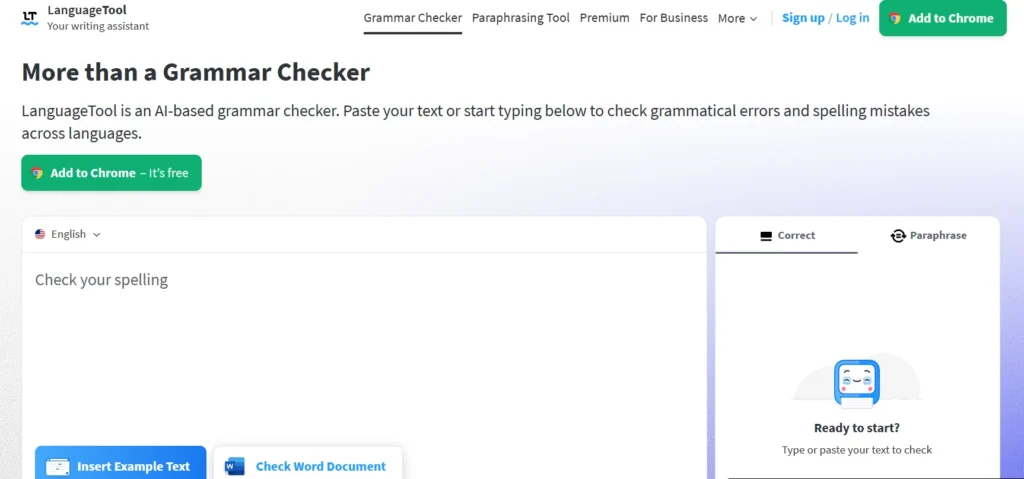
LanguageTool is a grammar and style checker built for writers who work in multiple languages. It supports over 30 languages, making it a strong choice for international teams, students, or professionals who need error-free writing in more than just English.
Its “Picky Mode” goes beyond surface-level mistakes, identifying advanced issues like subtle grammar errors and inconsistent phrasing.
LanguageTool is especially popular among non-native speakers who want extra confidence when writing in English while still needing support for their native language.
Compared to Grammarly, which is mainly English-focused, LanguageTool is far more versatile and inclusive. Its free plan is generous for everyday use, and its premium plan is one of the most affordable in the market, making it a practical option for budget-conscious users.
Key Features:
- Grammar, spelling, and style checks in 30+ languages
- Advanced “Picky Mode” for detailed corrections
- Browser extensions for Chrome, Firefox, Edge, and Safari
- Works with Google Docs, MS Word, and LibreOffice
- Free version available; premium starts at $4.99/month
Pros
- Wide multilingual support unmatched by Grammarly
- Affordable pricing with strong free features
- Easy integration with popular tools and browsers
- Good for teams and international businesses
- Open-source foundation trusted by developers and researchers
Cons
- Limited paraphrasing to single sentences only
- Fewer deep writing insights compared to Grammarly or ProWritingAid
- Interface feels less polished than premium tools
5. WhiteSmoke: The Global Communicator
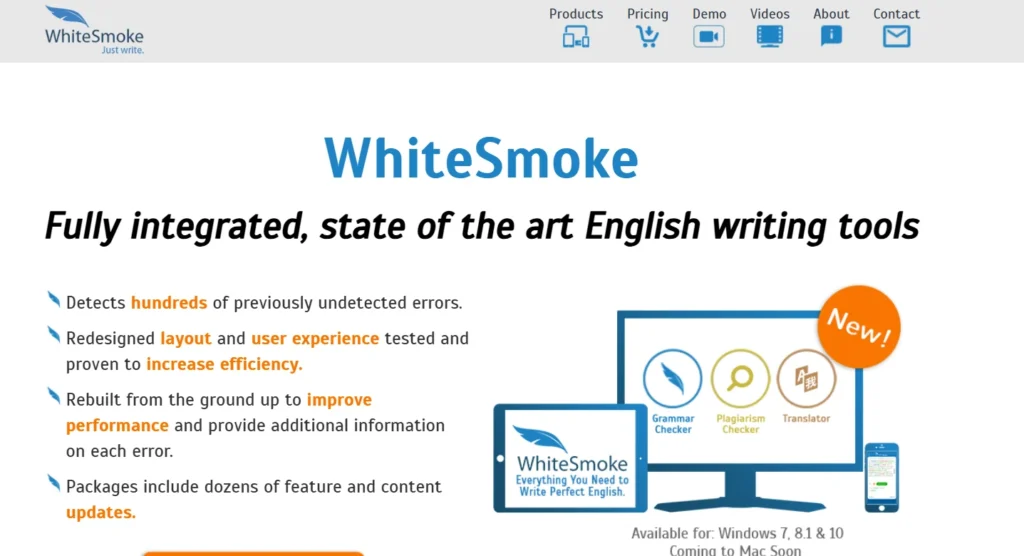
WhiteSmoke is a writing assistant that goes beyond grammar correction by offering style checks, plagiarism detection, and built-in translation features.
Supporting 55 different languages, it is tailored for professionals and businesses that create content for global audiences.
Unlike many other tools, WhiteSmoke not only identifies mistakes but also provides example sentences, helping users understand proper usage in context.
This makes it a solid choice for business communication, reports, and professional writing. While Grammarly focuses heavily on grammar and tone in English, WhiteSmoke’s translation and multilingual support give it an edge for international teams and writers handling cross-border communication.
Key Features:
- Grammar, style, and punctuation checks
- Built-in plagiarism detection
- Translation into 55 languages with contextual examples
- Available on desktop, web, and mobile
- Premium plan at $22.99/month
Pros
- Strong translation tools are not offered by Grammarly
- Clean and straightforward interface
- Great for professional and business writing
- Helps with multilingual documents and global communication
- Mobile support extends usability
Cons
- No direct document upload; requires copy-paste
- Pricing is higher compared to some alternatives
- Interface feels slightly dated compared to modern tools
6. Ginger Software: The Learning Tool
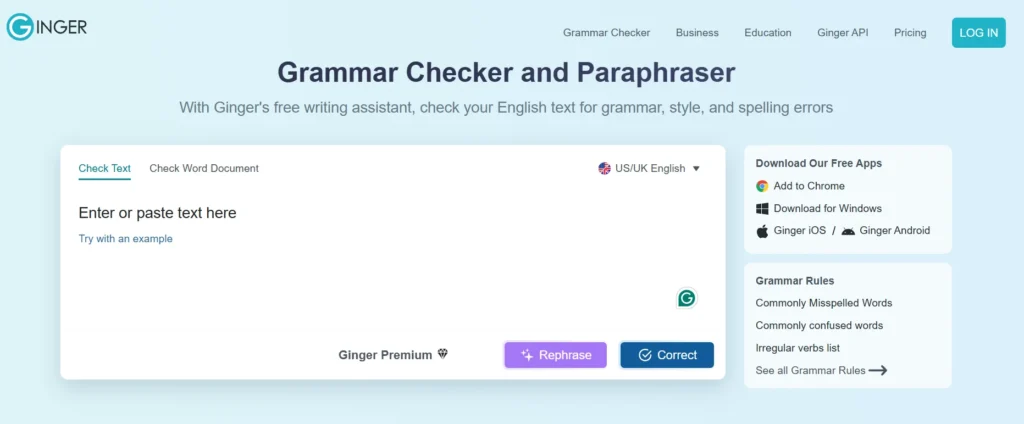
Ginger Software is built for more than grammar correction; it aims to help writers learn and grow. In addition to spotting grammar and spelling mistakes, Ginger offers text-to-speech, which allows writers to listen to their text and identify awkward phrasing.
It also supports translation in more than 40 languages, making it a handy option for non-native speakers. Tutorials, personalized suggestions, and writing improvement exercises add to its value as an educational tool.
Unlike Grammarly, which primarily corrects errors, Ginger encourages long-term skill development, making it ideal for students and language learners.
Key Features:
- Grammar and spelling correction in real time
- Text-to-speech function to hear writing out loud
- Translation across 40+ languages
- Personalized practice sessions for writing improvement
- Free version available; premium starts at $13.99/month
Pros
- Offers tutorials and learning features beyond corrections
- Beginner-friendly interface
- Decent free plan for basic use
- Supports multilingual users
- Text-to-speech adds extra value for catching mistakes
Cons
- Interface design feels outdated compared to modern competitors
- Feature updates are slower than leading tools
- Limited integrations with popular apps
7. QuillBot: The Paraphrasing Specialist

QuillBot has built a strong reputation as one of the best tools for paraphrasing and summarizing text. While it includes basic grammar and spell-checking, its real strength lies in rewriting sentences and paragraphs in fresh, natural ways.
Students often rely on it to simplify dense academic writing, while bloggers and content creators use it to repurpose text or avoid sounding repetitive.
QuillBot also features a summarizer that condenses long passages into shorter versions without losing meaning, which makes it handy for research and note-taking.
Compared to Grammarly, which mainly corrects mistakes and adjusts tone, QuillBot provides flexibility in rewriting, offering writers new ways to express ideas while keeping the original meaning intact.
Key Features:
- Paraphrasing tool with multiple modes (fluency, formal, creative, concise, etc.)
- Summarizer for condensing long passages
- Synonym slider to adjust vocabulary variety
- Grammar and spell-checking included
- Works with Google Docs, Chrome, and Microsoft Word
- Free version available; premium from $4.99/month
Pros
- Very affordable compared to Grammarly
- Excellent for rewriting and avoiding unintentional plagiarism
- Multiple paraphrasing modes for different writing styles
- Easy-to-use interface suitable for students and professionals
- A summarizer helps cut down research time
Cons
- Grammar checks are basic and less advanced than Grammarly
- Limited integrations compared to other tools
- Free plan restricts the number of features
8. Slick Write: The Free Grammar Tool

Slick Write is a simple, browser-based writing assistant that focuses on grammar and style checking. It’s designed for speed and accessibility. No sign-up is required, and it runs directly in your browser.
The tool analyzes sentence structure, word variety, and overall flow, giving writers immediate insights into their text. Bloggers, students, and casual writers often turn to Slick Write for quick edits without the need for subscriptions or logins.
While it doesn’t provide the deep analysis of tools like Grammarly or ProWritingAid, it’s a reliable, no-cost option for those who want to catch basic issues quickly.
Key Features:
- Grammar, style, and structure checks
- Flow and vocabulary analysis for stronger readability
- Web-based with no downloads required
- Browser extensions available for Chrome and Firefox
- Completely free to use
Pros
- 100% free with no hidden costs
- No account or login required
- Fast, lightweight, and easy to access
- Helpful for quick checks on essays, articles, or blog posts
- Provides readability and flow insights
Cons
- Lacks detailed grammar explanations or advanced suggestions
- No desktop or mobile app
- Limited customization compared to premium tools
9. Writefull: For Academic Writers
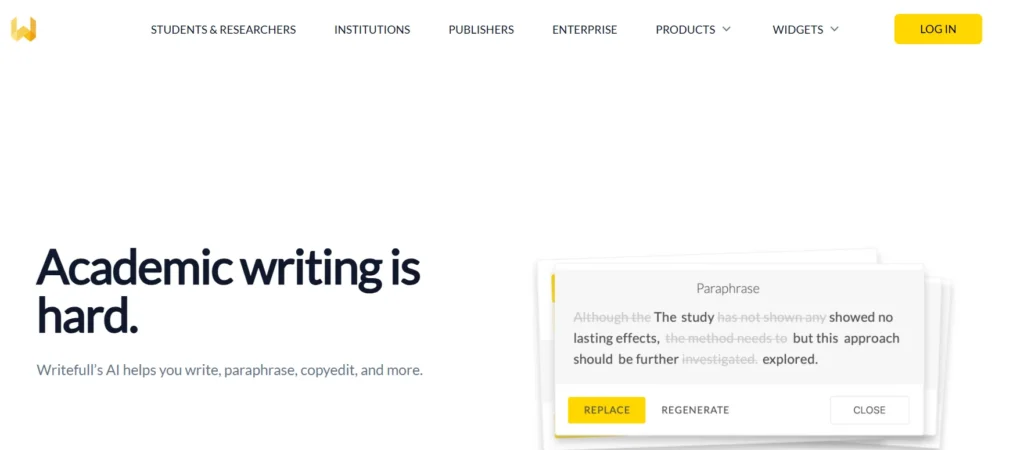
Writefull is tailored for researchers, students, and academics who need support with formal writing. Unlike general-purpose grammar tools, Writefull is designed for scientific papers, research articles, and academic essays.
It helps writers improve structure, tone, and clarity while maintaining a formal style. The platform integrates seamlessly with Microsoft Word and Overleaf, two of the most widely used tools in academic publishing.
Writefull also provides citation suggestions, title generation, and paraphrasing support features that are especially valuable for scholars working on complex manuscripts.
While Grammarly works well for general grammar correction, it lacks the depth and academic focus that Writefull provides.
Key Features:
- Feedback on formal tone and academic language
- Integration with Microsoft Word and Overleaf
- Widgets for citation generation, paraphrasing, and title suggestions
- Database-backed writing models tailored to research and education
- Premium plan starts at $5/month (billed annually)
Pros
- Specifically designed for academic and scientific writing
- Very affordable compared to Grammarly
- Strong support for citations and paraphrasing
- Helps ensure writing meets publication standards
- Lightweight and easy to use within existing workflows
Cons
- Limited appeal for casual or creative writing
- Fewer features outside academic contexts
- Smaller community compared to mainstream tools
10. Sapling: Built for Teams
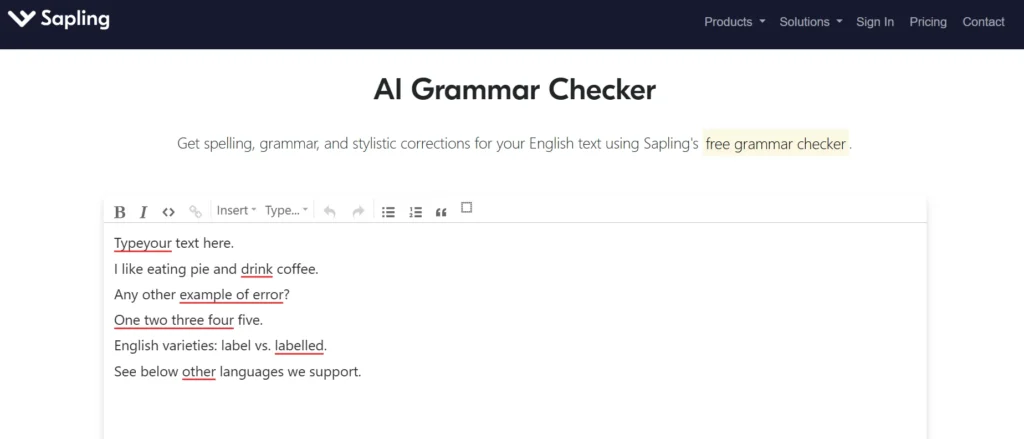
Sapling is an AI-powered writing assistant designed for business and customer-facing teams. Unlike tools aimed at individual writers, Sapling focuses on improving communication across entire organizations.
It checks grammar and tone in real time, while also offering customizable templates and reusable snippets to help teams respond faster and more consistently. Sales teams, customer support departments, and corporate communication teams find Sapling especially useful because it integrates directly with Gmail, Salesforce, Zendesk, and other workplace tools.
While Grammarly provides solid grammar correction, it does not offer the same level of workflow automation or business-focused features.
Key Features:
- Grammar, tone, and style corrections for professional writing
- Snippet library for reusable phrases and templates
- Smart autocomplete and response suggestions
- Integrations with Gmail, Salesforce, and Zendesk
- Free version available; premium starts at $25/month
Pros
- Improves team efficiency with reusable snippets and templates
- Strong business integrations not offered by Grammarly
- Saves time with AI-powered autocomplete and quick replies
- Tailored for sales, support, and customer-facing teams
- Provides consistency across company communication
Cons
- More expensive for individual users
- Not designed for creative or casual writing
- A feature-rich interface may feel overwhelming for freelancers
11. PaperRater: The Student’s Ally

PaperRater is built with students in mind, combining grammar and spelling correction with plagiarism detection and automated essay scoring.
It’s a web-based tool that delivers quick feedback, helping students improve their assignments without waiting for teacher input. What makes PaperRater stand out is its essay scoring system, which gives users an idea of how their writing might be graded.
This feature provides motivation and guidance for academic improvement. While Grammarly can flag mistakes, it doesn’t provide essay grading or as much student-focused functionality, which makes PaperRater more practical for classroom and assignment use.
Key Features:
- Real-time grammar, spelling, and style checks
- Built-in plagiarism detection
- Automated essay scoring system
- Designed for academic and student use
- Free version available; premium plan at $14.95/month
Pros
- Tailored specifically for students and academic writing
- Affordable premium plan compared to Grammarly
- Essay scoring adds an extra layer of learning
- Ad-free experience in the premium version
- Quick and easy for homework or essays
Cons
- Free plan limits the number of plagiarism checks
- Interface is plain and less modern than the competitors
- Not designed for professional or creative writers
12. Writer.com: The Brand Voice Keeper

Writer.com is designed for businesses that want consistent, clear, and on-brand communication across teams. It goes beyond grammar correction by offering style guides, inclusive language checks, and reusable snippets that keep company content aligned with brand values.
Marketing and content teams use Writer.com to ensure that tone, word choice, and inclusivity remain uniform across blogs, emails, reports, and campaigns.
Unlike Grammarly, which is aimed mostly at individuals, Writer.com is built for collaboration and team efficiency. Its customization features help businesses maintain a strong, professional voice across every platform.
Key Features:
- Custom brand style guides for tone and terminology
- Inclusivity and bias detection to promote respectful writing
- Reusable text snippets to save time for teams
- Integrations with tools like Google Docs, Chrome, and Slack
- Pricing available upon request
Pros
- Excellent for maintaining brand consistency
- Supports collaboration across entire teams
- Inclusivity checks go beyond standard grammar tools
- Great for marketing, sales, and corporate communication
- Flexible integrations for workplace tools
Cons
- Geared toward medium and large businesses, less useful for individuals
- Pricing is not publicly transparent
- May feel advanced for casual writers
13. Microsoft Editor: For Office Users
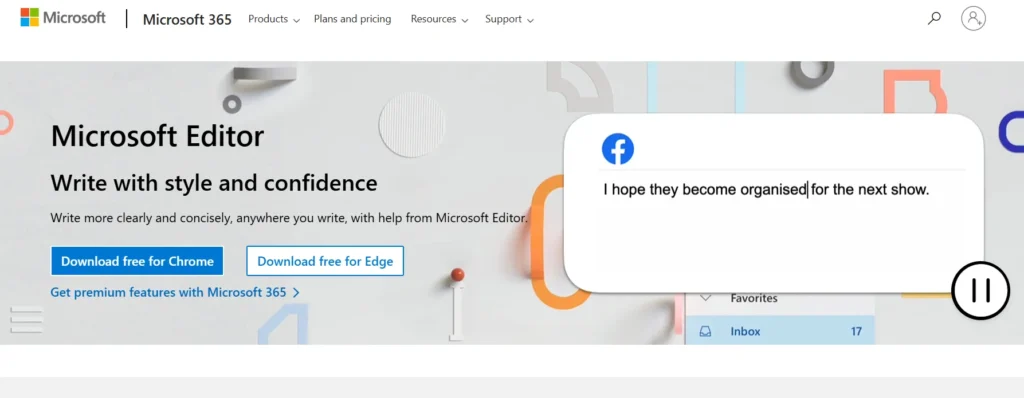
Microsoft Editor is Microsoft’s built-in writing assistant, designed to work seamlessly within Word, Outlook, and browsers.
It checks grammar, spelling, and clarity, providing essential support for anyone already working within the Microsoft 365 ecosystem.
With support for more than 20 languages, it is especially helpful for multilingual writers and professionals who use Office tools daily. Unlike Grammarly, which requires a separate subscription, Microsoft Editor is included with Microsoft 365, making it a cost-efficient choice for those already paying for the suite.
While it doesn’t deliver the same depth of style suggestions or detailed analysis as Grammarly, it covers the basics and integrates smoothly with everyday workflows.
Key Features:
- Grammar, spelling, and clarity checks
- Works in more than 20 languages
- Integrated directly into Word, Outlook, and browsers
- Free with Microsoft 365; standalone pricing varies
- Browser extension available for Chrome and Edge
Pros
- Built directly into Microsoft tools, no extra setup required
- Multilingual support makes it practical for global users
- Included at no additional cost with Microsoft 365
- Lightweight and easy to use for quick edits
Cons
- Lacks advanced writing insights and deep feedback
- Misses complex style and tone issues
- Limited compared to dedicated grammar platforms
14. Jasper AI: For Content Creation
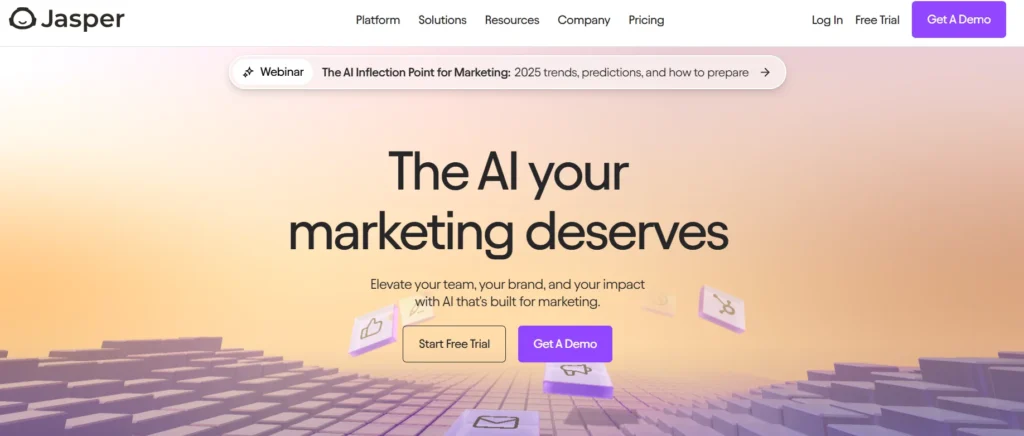
Jasper AI is more than a grammar checker; it’s a content generation platform that creates blog posts, ad copy, emails, and more.
It uses artificial intelligence to draft entire pieces of content in seconds, while also including built-in grammar and style checks to ensure the output is polished. Marketers, agencies, and content teams often use Jasper to save time on first drafts or repurposing content.
Compared to Grammarly, which only edits existing text, Jasper can actually generate original content, making it a unique tool for creators who need speed and efficiency.
While it comes at a higher price, its ability to produce and refine content in 30+ languages makes it a powerful addition to a professional content strategy.
Key Features:
- AI-powered content creation across blogs, ads, and emails
- Built-in grammar and style correction
- Supports 30+ languages
- Offers templates for different content formats
- Premium plan starts at $39/month
Pros
- Saves significant time for marketers and agencies
- Templates make content creation easier
- Strong multilingual support
- Combines writing generation and editing in one tool
- Great for scaling content production
Cons
- Higher cost compared to most Grammarly alternatives
- Editing features are less advanced than Grammarly’s
- May produce generic content without human oversight
15. SentenceCheckup: The Fast Fixer
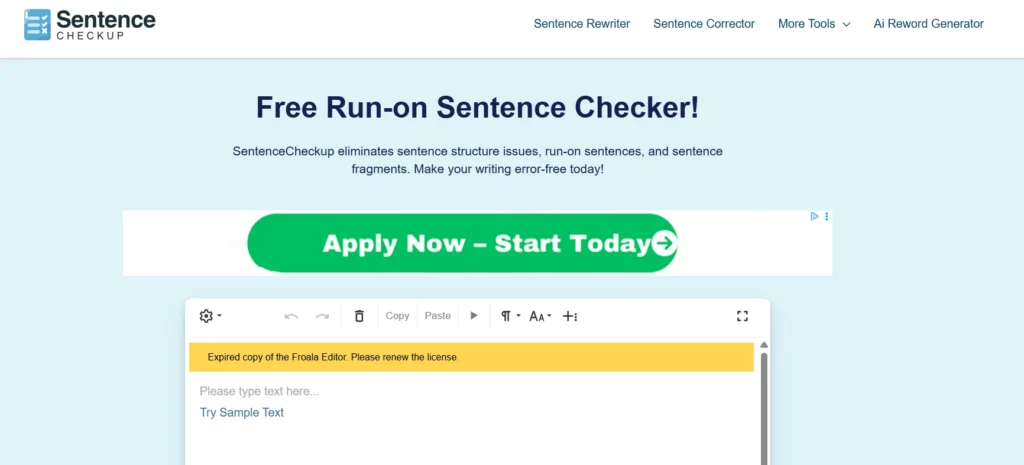
SentenceCheckup is a lightweight, web-based grammar tool designed for quick fixes. You simply paste your text into the platform, and it highlights errors in sentence structure and basic grammar.
It’s free to use, requires no signup, and is perfect for short pieces of writing like social media updates, personal emails, or quick blog edits.
Unlike Grammarly, which requires an account and offers advanced features behind a paywall, SentenceCheckup focuses on providing simple, instant corrections without any barriers.
While it lacks advanced editing and integrations, it’s a handy option for anyone who just wants a no-fuss tool for immediate grammar checks.
Key Features:
- Sentence structure and grammar checking
- Web-based, no installation or signup required
- Free to use instantly
- Provides quick suggestions for clearer writing
Pros
- Completely free with no restrictions
- Extremely fast and easy to use
- Ideal for short-form writing and quick edits
- No account setup required
Cons
- Limited to basic grammar checks
- No plagiarism detection or advanced features
- Not suitable for editing long document.
Quicklinks:
- Jasper AI Alternatives & Competitors🤖(Free & Paid)
- Best Zoom Alternatives for Meetings and Webinars
- Best Keywords Everywhere Alternative:(Free and Paid)
- Grammarly Free Trial — 7 Days Pro Access
Final Words
Grammarly is a strong tool, but it is not the only choice. The 15 alternatives we explored show that writers, students, and businesses all have different options that can fit their needs and budgets.
Some tools focus on clear and simple writing, some are built for academic work, while others help teams keep a strong and consistent voice. A few even come free of cost, which makes them easy to try.
The best way to find the right fit is to test a couple of these platforms and see which one matches your style and workflow. Each tool offers something unique, whether it is rewriting, translation, or team collaboration.
Which of these tools are you planning to explore first? Share your thoughts I’d love to know what works best for you.
